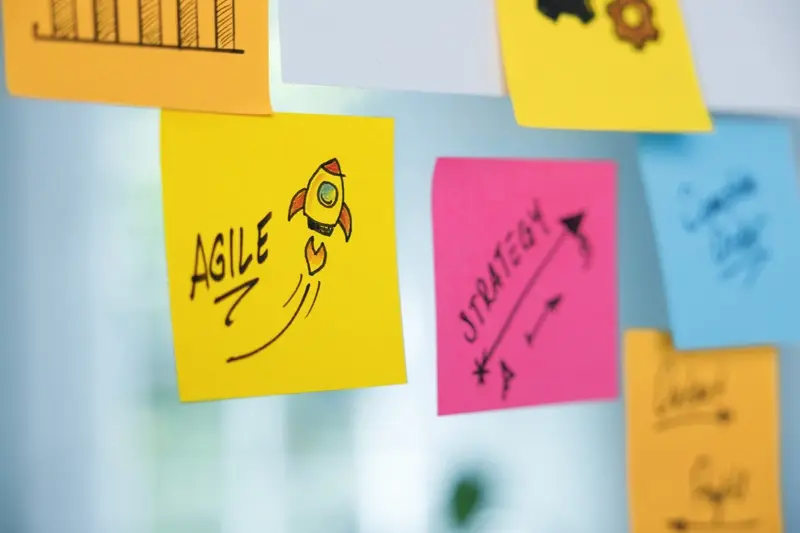What Factors Affect Mobile App Development Cost In The UK Market?
Thinking about building a mobile app in the UK? One of the first questions that pops up is "how much will this cost me?" It's a fair question—and one I've been asked hundreds of times during my years at Glance. The truth is that app development costs in the UK can range from £10,000 for something basic to over £250,000 for complex, feature-rich applications. That's quite a range! But don't worry, by the end of this guide, you'll understand exactly where your app might fall on that spectrum.
App costs aren't just random numbers pulled from thin air. They're based on tangible factors that we can break down and explain. From the complexity of features you want to include, to the hourly rates of developers in different parts of Britain, to the technology stack you choose—each decision impacts your bottom line. Many clients I work with are surprised to learn that design choices, testing requirements, and ongoing maintenance all play significant roles in the total investment needed.
The most expensive app is the one that fails to meet your business objectives—regardless of how much or how little you spent building it.
In this guide, we'll walk through every factor that affects mobile app development costs in the UK market. I'm not going to sugar-coat anything—building quality apps requires proper investment. But I'll share insider knowledge that can help you make smart decisions about where to allocate your budget and where you might be able to save without compromising quality. Whether you're a startup founder with a brilliant idea or an established business looking to expand your digital presence, understanding these cost factors is your first step toward app success.
Understanding the UK Market for Mobile App Development
The UK market for mobile app development is unique—something I've noticed after working with countless British clients. London has a massive concentration of tech talent, but Manchester, Edinburgh, and Bristol are catching up fast with their own tech scenes. Regional differences matter too; what works for users in London might not resonate with those in Yorkshire or Scotland.
Market Expectations and Spending
UK app users expect quality and are willing to pay for it. They're quite sophisticated compared to other markets I've worked in. British users have high standards when it comes to data privacy and security—something that's been true even before GDPR came along. This means we often need to build in more robust security features, which naturally affects development costs. The average UK business spends between £20,000 and £80,000 on app development, though I've seen projects range from £5,000 all the way up to £500,000 for enterprise solutions.
Competition and Specialisation
The UK has thousands of app development companies; we're not exactly in short supply! What this means for you is that prices can vary dramatically. London-based agencies typically charge 30-40% more than those outside the capital. Many UK developers specialise in certain industries—fintech, healthcare, and retail being particularly strong sectors. If your app falls into one of these categories, you might pay more for that expertise but you'll get developers who understand your market inside out. Trust me, that industry knowledge is worth every penny when it comes to building something that actually works for your target audience.

The Role of App Complexity in Cost Determination
Let's be honest—the more complex your app is, the more it'll cost to develop. I've seen this countless times working with UK clients; a simple weather app might cost a few thousand pounds, while a multi-feature social platform with messaging and payments could set you back £50,000 or more. App complexity isn't just about how many screens your app has—it's about the functionality that powers each feature.
What Makes an App "Complex"?
App complexity comes down to several factors: the number of features, user roles, third-party integrations, and backend requirements. A delivery app that tracks drivers in real-time, processes payments, and manages inventories is far more complex than a static information app. Each added feature requires extra development time—and in the UK market, where developer rates range from £300 to £750 per day, those hours add up quickly!
Before approaching developers, create a list of "must-have" versus "nice-to-have" features. This will help you prioritise functionality and potentially reduce your initial development costs.
Hidden Complexity Costs
Don't forget about the invisible elements that drive costs up. Things like data encryption, server architecture, and scalability planning aren't flashy features users see, but they're essential for app performance—and they're not cheap. I always tell my clients to account for these "behind the scenes" components when budgeting; they often represent 30-40% of total development costs in the British market. Start with a minimum viable product (MVP) and add complexity gradually as your user base grows—your wallet will thank you!
Development Team Structure and Costs
The team behind your mobile app plays a massive role in how much you'll end up spending. I've worked with countless different team configurations over my years at Glance, and I can tell you there's no perfect setup—just the right one for your project.
Team Composition Options
Your development squad typically includes a project manager, designers, developers, and testers. But how you structure this team dramatically affects your budget. UK-based senior developers command £500-800 per day; those are the numbers you need to be aware of. Junior developers cost less but might take longer to complete tasks—a trade-off worth considering if you're not in a rush.
- In-house team: Complete control but highest overall cost
- UK agency: Quality assurance with mid-range pricing
- Freelancers: Lower hourly rates but coordination challenges
- Offshore team: Cost savings of 40-60% with potential communication hurdles

Hidden Team Costs
Many clients I've worked with forget about the additional team-related expenses. Project management alone can add 15-20% to your budget—yet it's absolutely necessary for keeping everything on track. Communication tools, collaboration software licences, and regular meetings all add up too. And don't forget about post-launch support; your team doesn't just disappear once the app goes live!
My advice? Be upfront about your budget constraints with potential partners. A good development team will help you balance cost concerns with quality requirements—they should work with you to find the right structure that fits your specific needs and financial situation. If you're wondering who are the best app developers for your project, it's worth researching different team structures and their associated costs.
Technology Choices and Their Price Impact
When planning your mobile app, the tech stack you choose can make a massive difference to your budget—both up-front and down the line. Native apps (built specifically for iOS or Android) typically cost more initially because they require separate development teams with platform-specific skills. These apps perform brilliantly and can access all device features, but you're paying for two development tracks instead of one.
Cross-platform frameworks like React Native and Flutter have become quite popular in the UK market. They allow developers to write code once and deploy to both iOS and Android—potentially cutting development costs by 30-40%. The trade-off? They might not match native performance for highly complex apps; something to consider if your app needs to process intense graphics or integrate deeply with device hardware.
Every pound saved on the tech stack today could cost you five pounds in performance issues or customer satisfaction tomorrow
Backend Considerations
Your backend technology choices impact costs just as much as front-end decisions. Ready-made Backend-as-a-Service solutions can slash development time for simpler apps, while custom backends built with Node.js, Django or Ruby on Rails give more control but at higher prices. Cloud services pricing varies too—AWS, Azure and Google Cloud all have different cost structures that affect your ongoing expenses. The right technology choices should balance your current budget constraints against future scalability needs—a balance that's different for every app.
Design Considerations and Budget Implications
When it comes to app design, there's a direct link between what you want and what you'll pay. I've seen countless clients surprised by how design choices affect their bottom line—it's not just about making things look pretty! Every visual element, animation, and interface detail adds hours to the development schedule.
Design Elements That Impact Your Budget
Custom visuals cost more than standard ones; that's just how it works. A bespoke interface with unique animations might look fantastic, but it requires specialist designers and developers—which means higher costs. On the flip side, using pre-built components and standard UI kits can save you thousands of pounds without necessarily compromising on user experience.
- Custom illustrations and icons: £1,000-£5,000 additional cost
- Animated transitions and effects: 20-40% increase in UI development time
- Complex user journeys: 30-50% more screen designs needed
- Accessibility features: 15-25% additional development time
- Multi-device optimisation: Doubles design work for each additional form factor
My advice? Start simple and expand later. Many successful apps began with a minimal design that did one thing well—no bells and whistles needed. You can always add fancy features in version 2.0 once you've got users and revenue. This staged approach not only makes financial sense but also lets you test what your users actually want before investing in complex design elements they might not even notice or appreciate! Understanding what separates good apps from great ones can help you make smarter design investment decisions.
Testing and Quality Assurance Expenses
Let's be honest—quality assurance isn't the glamorous part of building apps, but it's absolutely critical. In the UK market, testing typically accounts for 20-30% of your total development budget. Why so much? Because finding bugs after launch costs about 5 times more to fix than catching them early. Trust me, I've seen companies scramble when users discover problems that should have been caught during testing—it's not pretty.
Types of Testing and Their Costs
- Functional testing - £35-60 per hour
- User acceptance testing - £40-70 per hour
- Performance testing - £45-80 per hour
- Security testing - £70-120 per hour
- Compatibility testing (across devices) - £35-65 per hour
The complexity of your app directly influences testing costs. A simple app might need just 40-60 hours of testing, while complex apps can require 200+ hours. UK testing specialists charge premium rates compared to overseas options, but they offer valuable market-specific insights. They understand local user behaviours and expectations—something that's hard to replicate with offshore teams.
Never cut corners on security testing! UK users are particularly concerned about data protection due to GDPR, and security breaches can cost you not just in fixes but in reputation damage—which is much harder to repair than code.
Automated vs Manual Testing
Automated testing costs more upfront but saves money long-term if you're planning regular updates. Manual testing gives you detailed feedback but becomes expensive for repeated test cycles. Most UK apps use a combination of both—automation for repetitive tests and manual testing for user experience evaluation. The right balance depends on your app's complexity and your update schedule. Learning what makes the difference between so-so apps and stellar apps can help you understand which testing approaches provide the best return on investment.
Ongoing Maintenance and Update Costs
Once your app is live, the spending doesn't stop there—not by a long shot! App maintenance is like caring for a garden; ignore it and things quickly get overgrown and messy. From my experience working with clients at Glance, I'd say you should budget for annual maintenance costs between 15-20% of your initial development investment. This might sound steep, but it's actually quite reasonable when you consider everything involved.
What Does Maintenance Include?
Most people don't realise just how much goes into keeping an app running smoothly. It's not just about fixing bugs (though there are always bugs to fix). You've got to keep up with operating system updates from Apple and Google—these happen regularly and can break functionality if you don't adapt. Then there's server costs, API integrations that need monitoring, security patches, and performance optimisations. All of this takes time and skilled developers.
- Bug fixes and performance improvements (monthly)
- OS compatibility updates (2-4 times yearly)
- Server and infrastructure costs (ongoing)
- Security patches and updates (as needed)
- Analytics monitoring and implementation (ongoing)
- Feature updates and enhancements (quarterly)
Let me be straight with you—apps that don't get updated regularly fade into obscurity. Users expect fresh content and improved features; they'll delete your app in seconds if it seems abandoned or outdated. The UK market is particularly competitive, with users having high expectations for app quality and responsiveness. Planning for these ongoing costs from the start will save you headaches down the line—and potentially save your app from the digital graveyard. If you're still developing your concept, check out our guide on turning your app idea into reality to understand how early planning can reduce long-term maintenance costs.
Conclusion
Let's face it—building a mobile app in the UK isn't cheap. The costs can range dramatically based on your app's complexity, team structure, tech choices, design requirements, testing approach, and ongoing maintenance needs. From my experience working with countless British businesses, most quality apps start around £20,000 and can easily reach £100,000+ for feature-rich solutions. But don't let those numbers scare you off!
What I've learned over the years is that understanding these cost factors gives you power. It lets you make smart decisions about where to invest your budget and where to trim—without compromising the quality of your final product. For example, you might choose a simpler UI design to free up budget for more robust backend development; that's a legitimate trade-off many successful apps have made. Understanding how app development starts and ends with your customer can help you make smarter budget allocation decisions that prioritise user value over flashy features.
The UK market has its own pricing quirks compared to global standards—London-based developers typically charge more than those in Manchester or Edinburgh—but quality work exists across the country. My best advice? Get multiple quotes, ask detailed questions about pricing structures, and be clear about your priorities. Don't just pick the cheapest option; find the team that understands your vision and can deliver it within your budget constraints. After all, a well-built app that meets user needs is never a waste of money—it's an investment in your business's future.
Share this
Subscribe To Our Learning Centre
You May Also Like
These Related Guides

How Much Does Agile App Development Cost Compared To Traditional Methods?

How Much Does It Cost To Build A Blockchain Mobile App?



